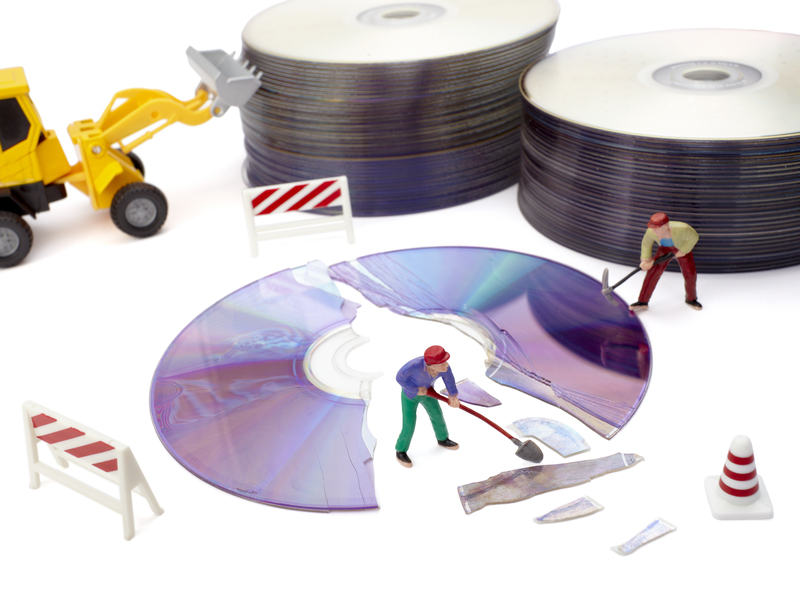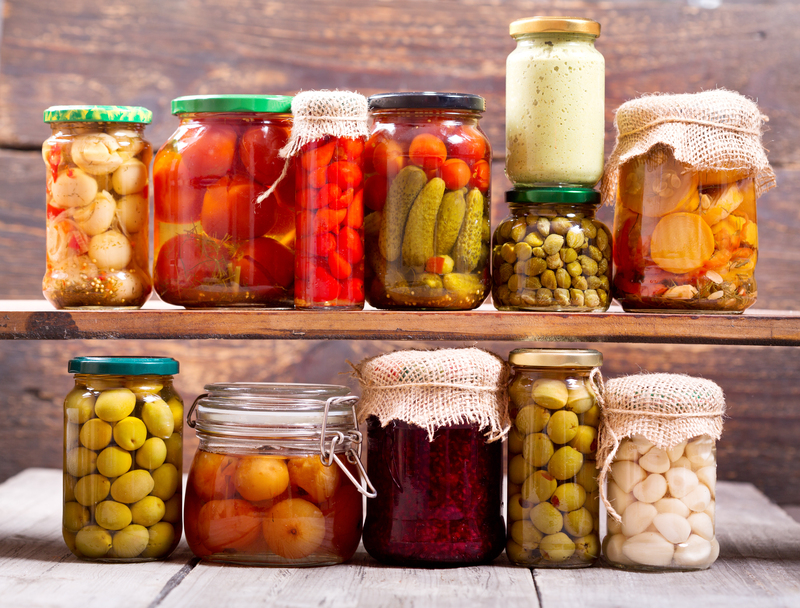Where and How to Recycle Nonstick and Metal Cookware
Upgrading your kitchen essentials often means getting rid of old pans and pots. But, what do you do with worn-out nonstick skillets or dented aluminum saucepans? Simply tossing them in your trash isn't eco-conscious, and, in many cases, isn't permitted. If you're wondering where and how to recycle nonstick and metal cookware, this comprehensive guide will help you find the most responsible, environmentally-friendly options--saving your cookware from landfill and possibly giving it a brand-new life.
Why Recycle Pots and Pans?
Pans and pots are made out of valuable materials like aluminum, stainless steel, iron, and nonstick-coated metals. These materials can be recycled and reused to make new goods, conserving natural resources, and reducing demand for raw metal extraction. However, not all cookware is recycled in the same way. The methods for recycling nonstick cookware (such as Teflon or ceramic-coated pans) and regular metal cookware (such as stainless steel or cast iron) vary depending on the coatings and construction.
- Reduces landfill waste: Keeping hefty pots and pans out of landfill lightens the environmental burden.
- Saves resources and energy: Recycled metals require less energy than mining new materials.
- Promotes circular economy: Properly recycled cookware can become new appliances, bike frames, or even fresh pans.
Bottom line: Smart disposal makes your kitchen greener!

Are Nonstick and Metal Cookware Items Recyclable?
Most cooking pots, whether aluminum, copper, iron, or steel, are recyclable with scrap metal. Yet, nonstick cookware, especially pans with Teflon or ceramic coatings, presents a challenge. Not all recycling and scrap yards accept these because the nonstick surface must be removed before recycling the underlying metal.
Types of Cookware You Can Recycle
- Pure metal: Stainless steel, cast iron, aluminum, and copper cookware (without plastic handles or glass lids).
- Nonstick pans: Only accepted by certain recycling programs and scrap metal yards.
- Anodized or enameled cookware: Sometimes accepted, but check with your recycling center first.
What can't be recycled? Cookware with wooden handles, glass, some ceramics, or fully plastic parts generally isn't accepted in metal recycling streams. Always remove these parts before recycling whenever possible.
Where to Recycle Nonstick and Metal Cookware
Don't just put your old pans at the curb with your bottles and cans! Here's where you should look to recycle your used cookware:
1. Local Scrap Metal Yards
Scrap yards specialize in recycling metals. Most yards accept plain metal cookware, including cast iron and aluminum pans, with or without minor nonstick coatings. However, call ahead and ask if they accept nonstick cookware. Some yards may ask you to remove plastic or rubber handles.
- How it works: Drop off your pots and pans in the metal pile. You may even be paid by weight.
- Pro tip: Find your nearest scrap yard using online directories like Earth911 or simply search "scrap metal recycling near me".
2. Municipal Recycling Programs
Some curbside recycling services accept metal pans and pots, but in most cities, you can't put nonstick-coated cookware in the bin because the coating contaminates the recycling process.
- Check your city's guidelines: Visit your municipality's website or recycling program page and search for "metal cookware recycling".
- Drop-off events: Some localities host periodic recycling days where harder-to-recycle items like cookware are collected.
3. Manufacturer Takeback Programs
Certain top cookware brands promote sustainability by offering takeback or recycling programs. Examples include:
- Calphalon: Accepts their old cookware, both metal and nonstick, for recycling. Contact customer service for details.
- GreenPan: Occasionally runs trade-in programs for used nonstick pans.
- TerraCycle: Occasionally partners with manufacturers to recycle cookware (ususally for a fee).
Check with your pan's brand: you may find a dedicated recycling or discount program for returning your old products!
4. Specialty Recycling Facilities
Some Household Hazardous Waste or "hard-to-recycle" centers accept old pans, even nonstick. These facilities have specialized ways to deal with coatings and mixed materials.
- How to find one? Search online for "hard to recycle centers near me" or use Earth911's directory.
- Fees & appointments: Some centers require a small fee or an advance booking.
5. Donation and Upcycling
If your pots and pans are still usable (not peeling, warped, or dangerous), consider donating or selling them before recycling:
- Thrift stores and charity shops: Accept quality kitchenware if it's safe to use.
- Freecycle or Buy Nothing Project: Give away gently-used items within your local community.
- Creative upcycling: Turn old saucepans into planters, birdbaths, or artsy yard decor.
Remember, reusing is typically even better for the environment than recycling!
How to Prepare Cookware for Recycling
Before dropping off your cookware, follow these steps to make it easier for recyclers:
- Clean Thoroughly
- Wash away oils, grease, or food residue to avoid contamination.
- Disassemble Parts
- Remove handles, knobs, lids, and plastic or wooden components if possible.
- Label Nonstick Items
- If using a scrap yard, clearly note if the pan is nonstick or coated so staff can sort it appropriately.
- Bundle Small Items
- Put smaller cookware pieces in a metal container or bag for easy handling.
Disposing of Nonstick (Teflon) Cookware: Special Tips
Nonstick pans require special attention because of the chemical coatings (like PTFE). These coatings can't be recycled in most municipal curbside recycling or even at many scrapyards. Here's what you can do:
- Contact pan manufacturers: Some brands offer take-back recycling for their nonstick items.
- Check with specialty centers: Some hazardous waste centers will take nonstick pans for proper disposal or recycling.
- Last resort: If no options exist, wrap and dispose of old nonstick pans in your regular trash (only if local guidelines allow).
Never burn or attempt to remove nonstick coatings yourself--this can release harmful fumes!
How to Find Cookware Recycling Near You
It's easier than ever to find recycling options, but not all centers accept everything. Here's how you can locate the best place to recycle metal and nonstick pans near you:
- Use Online Recycling Directories:
- Earth911, How2Recycle, and your city's own website all have searchable indexes.
- Enter "cookware" or "pots and pans" along with your zip code for local answers.
- Contact Local Scrap Yards or Recycling Centers:
- A phone call or email can clarify exactly what items are accepted.
- Inquire at Household Waste Events:
- Some cities host annual cleanup or recycling drives for hard-to-recycle goods.
- Ask Cookware Stores:
- Brands like Sur La Table, Williams Sonoma, and others may know of programs or offer drop-off bins periodically.
Commonly Asked Questions About Cookware Recycling
Can You Put Metal Pots and Pans in Your Recycling Bin?
Usually, no. Curbside recycling rarely allows cookware because:
- Size and shape: Can jam machinery.
- Coatings: Most curbside programs can't process nonstick or enamel-coated items.
- Mixed materials: Handles, knobs, and other components complicate recycling.
Always check with your recycling program directly before placing cookware in your bin.
What About Aluminum Foil and Bakeware?
Clean aluminum foil and uncoated bakeware can sometimes be recycled curbside. Always check local guidelines, and avoid recycling heavily soiled or nonstick-coated foil pans.
Are There Eco-Friendly Alternatives to Nonstick Cookware?
When replacing your cookware, consider eco-friendly alternatives:
- Stainless steel: Highly durable, fully recyclable at end-of-life.
- Cast iron: Virtually indestructible and endlessly recyclable.
- Ceramic: Natural and PTFE-free options available.
- Carbon steel: Lasts generations with proper care.
Investing in high-quality, repairable pots and pans means less waste in the future!
Creative Ways to Reuse or Upcycle Old Pots and Pans
If recycling isn't an option, reuse and upcycling can give cookware a second life. Here are some creative ideas:
- Garden planters: Fill with soil and grow herbs, succulents, or flowers.
- Birdbaths: Use shallow pans for garden wildlife.
- Organizational bins: Store tools, art supplies, or garden seeds in large stockpots.
- Wall art: Hang vintage or colorful pans for a rustic kitchen display.
- Kids' play kitchens: Gently-used, cleaned pans make great play props.

Summary: Go Green with Responsible Cookware Disposal
Recycling or responsibly disposing of nonstick and metal pots and pans isn't just about decluttering your kitchen--it's about lowering your carbon footprint, minimizing landfill waste, and setting a sustainable example for your community. By following the tips above, you can make sure your trusty old pans get a new lease on life--either as recycled metal or a creative upcycled project.
- Check with local recycling centers, scrap yards, and manufacturers for cookware recycling options.
- Properly prepare your cookware by cleaning and disassembling it as much as possible.
- Choose eco-friendly cookware in the future for easier recycling and less waste.
With a little research and effort, you'll ensure your old pans avoid the landfill and support a more sustainable future. Make recycling your cookware a standard part of your kitchen clean-out routine!